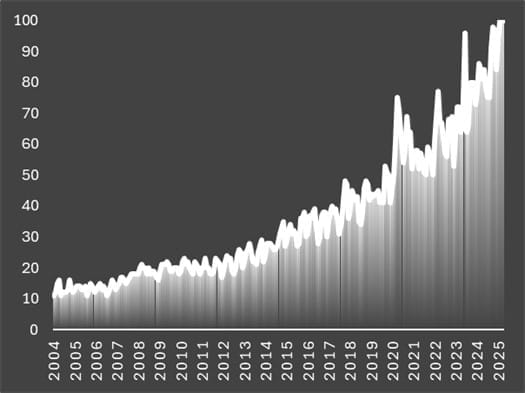Trustees and employers overseeing the United Kingdom’s 5,000 corporate pension plans holding an estimated £1.2 trillion have another option to help manage the defined benefit assets.
TPT Retirement Solutions currently oversees around £11 billion in pension fund assets, and has launched a DB “superfund” that will invest on behalf of plans seeking to ‘run-on,’ UK pension industry parlance for well-funded schemes choosing to continue as they are, rather than opt for a so-called buy out, and sell to an insurance company.
TPT estimates assets under management in the new superfund could reach £3 billion in five years. Under its model, TPT would ultimately share investment profits with beneficiaries and would invest in growth assets, in line with the government’s ambitions to get pension funds to invest more in UK productive assets.
Currently, many of the UK’s DB funds, often in their end game as their corporate sponsor prepare to shift its liabilities off balance sheet, aren’t positioned to tie up assets in illiquid investments.
“There will be an emphasis on private markets and deploying capital in a manner that aligns with the UK government’s current thinking, we believe,” says Nicholas Clapp, chief commercial officer of TPT, speaking to Top1000funds.com. “Our structure means we will be able to have a long-term horizon and support illiquidity, and we will also be able to create an internal market from one client to another, and from one solution to another. This investment philosophy is already at the heart of what we want to do.”
He adds that the latest solution on offer from TPT reflects the organisation’s commitment to offer a range of consolidation options to the UK pension market.
“We believe this is another compelling option and will encourage UK pension funds to consider TPT as one of their consolidation options – we offer a different type of opportunity and skill set to deliver on behalf of DB pension schemes.”
Overtime, the superfund will achieve synergies and efficiencies by merging vintages of client DB funds”, Clapp continues. Schemes within the superfund will have access to seven different fund structures in a fund of fund vehicle enabling them to access numerous managers. From this they will be able to create an asset mix shaped by their maturity, risk appetite and investment objectives.
He says the fees will be specific to each deal, but notes TPT is experienced at running solutions that offer value for money and use scale to create operational efficiency. “We can do everything in house; we have the skill set, pipework and plumbing between different services like actuarial, administration and fiduciary management.”
TPT will submit its proposal to the pensions regulator for assessment in January. So far, only one other superfund, Clara Pensions, has passed regulatory scrutiny and Clapp believes the superfund market is large enough to accommodate different varieties of superfund, and not be homogenous. “When you look through the lens of risk, we present a different type of skills set to deliver DB pension schemes, and our track record speaks to itself.”
Still, he says that positive feedback has primarily come from consultants rather than corporate pension funds themselves.
Moreover, take up of superfunds by the DB pension community has been historically slow. The sharp rise in interest rates in 2022 improved the funding levels of many DB schemes and by 2024, many funds were close enough to 100 per cent funded to be sold to an insurer.
But TPT hopes it offers a compelling selling point. It will allow pension schemes in the superfund to use the surplus for member augmentations in an approach Clapp believes will be both “interesting and appealing” to a wide variety of funds.
However, this will only happen when TPT’s seed investor is repaid.
UK regulations require all DB funds entering the super fund are fully funded on a buy out basis whereby the pension scheme has enough assets to transfer all of its liabilities to an insurance company which then takes over paying members’ pensions. This meant TPT’s required finding a seed investor to take on the role of the sponsor, ensuring the pension funds are fully funded.
“Once our seed investor has earned their investment back, members should get the majority of the surplus,” he concludes. “Our strategy allows members to enhance benefits more than they would normally which will be an alternative to consider for ceding sponsors and trustees.”
